What is mucus? symptoms, causes, diagnosis, & treatment
DOES THE COLD FILL YOUR NOSE WITH GLOBS OF GOOEY FLUID? EVER WONDERED WHAT PURPOSE THIS STICKY & NASTY-LOOKING SPUTUM SERVES?
As the colder months approach, most of us grapple with a random coughing attack or common cold. You may find yourself coughing up sputum or blowing globs of sticky fluid in tissues when sick.
However, don’t be deceived by its nasty looks, mucus plays a vital role in our body. It helps our organs stay moist, allows the exchange of gases and nutrients, and protects against harmful particles, such as smoke, dust, and bacteria.

• DID YOU KNOW?
Mucus is present in the eyes, respiratory tract, gastrointestinal tract, and reproductive tract.
The mucus is mainly composed of mucin (a type of protein), salts, lipids, minerals, and water. Our body produces about 1-1.5 liters of mucus each day. Under normal conditions, we swallow the mucus without noticing it. However, when we are sick, the volume and consistency of the mucus may change producing sputum or phlegm which may cause discomfort and annoyance.
WHAT ARE THE CAUSES OF ABNORMAL SECRETION OF MUCUS?
The mucus in the lungs and airways traps the inhaled toxins and pathogens. The ciliary movement and cough then remove these trapped harmful particles from the lungs and clear the airways. However, an impaired mucus barrier can make the lungs susceptible to various diseases and increase the production of mucus.
Some of the conditions that can lead to increased secretion of mucus include
COMMON COLD:
It is an upper respiratory infection caused by viruses, mainly rhinovirus. Common colds can lead to runny nose and cough.
SINUSITIS:
It is the inflammation of the sinus. It occurs when the sinuses are blocked and filled with fluids.
ALLERGIC RHINITIS:
It occurs when an allergen, such as dust or smoke, causes the inflammation of the inner lining of the nose
CHRONIC OBSTRUCTIVE PULMONARY DISEASE (COPD):
It is an inflammatory lung disease that blocks the airflow from the lungs.
ASTHMA:
It is the inflammation of the airways. It often results in increased production of mucus.
PULMONARY CYSTIC FIBROSIS:
It is a genetic disorder that leads to the production of thick and sticky mucus in the lungs.
BRONCHIECTASIS:
It is a lung disorder that leads to coughing up mucus or sputum.
WHAT ARE THE SYMPTOMS OF ABNORMAL MUCUS SECRETION?
Abnormal mucus secretion can lead to:

Wet or productive cough

Wheezing

Nasal & airway congestion

Trouble sleeping
WHAT DOES MUCUS COLOR CHANGE MEAN?
Have you ever looked at the contents of the tissue after you’ve blown your nose? Is your nasal mucus clear or green, yellow, or even reddish? You may be wondering what these different colors indicate?
Let us understand the different types of mucus based on their color.
CLEAR:
Clear mucus is considered normal or healthy
YELLOW OR GREEN:
Yellow or green mucus isn’t always an indication of infection. However, viral or bacterial infection can lead to this type of mucus color.
Mucus can also have a yellow or green color due to an increase in the number of immune cells or enzymes produced by these cells.
PINK OR REDDISH:
The presence of blood in your mucus can lead to a pink or reddish tinge. It can be caused due to damage or irritation of the nasal lining.
The excessive blowing of the nose or constant rubbing of the nose can lead to the breakage of certain blood vessels.
BROWN:
Brown mucus may be caused due to old or residual blood.
The other causes include inhalation of dirt.
BLACK:
Black mucus can be caused due inhalation of smoke or the presence of heavy air pollution. Severe fungal infection can also lead to black mucus.
No matter the color of your mucus, it’s important to consult your doctor for an accurate diagnosis of your condition.
HOW TO GET RID OF EXCESS MUCUS?
It is normal, to have some amount of mucus in your airways. But excessive mucus can lead to nasal congestion. Hence, the main objective of the treatment is to control or reduce the secretion of mucus and clear the airways.
Your mucus treatment will depend on your symptoms and the type of cough. Some of the mucus treatments are:
OVER-THE-COUNTER MEDICINES:
DECONGESTANTS:
Decongestants are commonly used to ease the symptoms of excessive mucus production. They are available in the form of oral or nasal spray.
EXPECTORANTS:
An expectorant helps clear the mucus from the airways by making it thinner so that it can easily be coughed up. Cough formulations containing diphenhydramine and ammonium chloride act as a cough expectorant.
PRESCRIPTION MEDICINES:
In case you are suffering from abnormal mucus secretion for a long time, consult your doctor immediately.
Depending on your underlying condition, your doctor may prescribe certain medications to relieve the cough.
PHYSICAL TREATMENT:
Patients with a severe accumulation of mucus may require physical treatment. Chest physical therapy and airway clearance devices are some of the physical treatment options.
HOME REMEDIES:
In case your symptoms are mild, you can consider the following home remedies.
HUMIDIFIERS:
These devices can fill your airways with water vapors and moisturize your airways. This may reduce the mucus in the nose and throat.
ESSENTIAL OILS:
Using certain essential oils, such as Eucalyptus oil, may help clear the airways and drain the excess mucus.
HYDRATION:
It’s important to drink plenty of water while suffering from nasal congestion.

WHEN TO CONSULT A DOCTOR?
Abnormal mucus secretion can be caused due to several reasons, such as allergies, COPD, asthma, and bronchitis.9 Your doctor may ask you to undergo a sputum test to determine the cause of abnormal mucus secretion.
However, consult your doctor if:
Your symptoms worsen.
You are suffering from cough for a long time
You are experiencing chest pain, intermittent nose bleeds, or trouble breathing
You have wheezing or noisy breathing and feel fatigued
You have underlying health complications, such as high blood pressure, diabetes, or lung condition